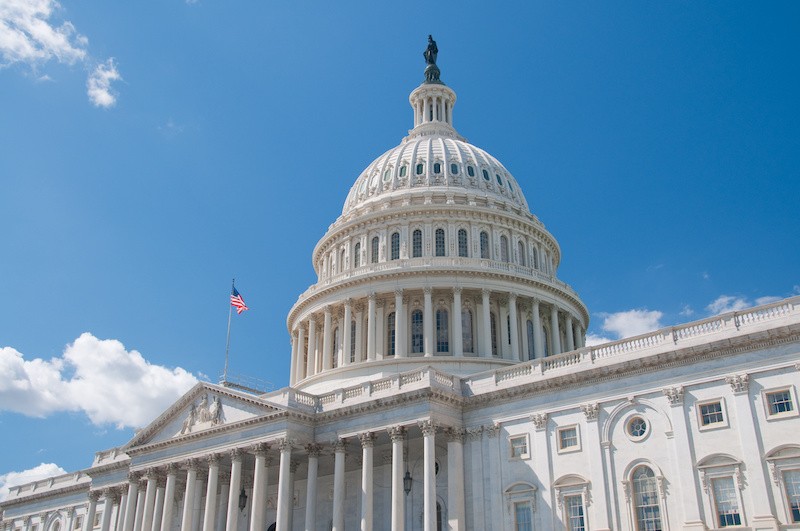Testimony before the US House of Representatives Committee on Financial Services Subcommittee on Monetary Policy and Trade
Chairman Huizenga, Ranking Member Moore, thank you for this opportunity to testify before your subcommittee on a topic that I believe is of critical importance to US interests in the world.
Earlier this year, the United States faced a gut check moment when it comes to its leadership in the multilateral development banks (MDBs). In June, 56 countries, including important US allies like Germany, the UK, and Australia, joined the Chinese government in creating a new MDB, the Asian Infrastructure Investment Bank (AIIB).
And while the United States was roundly criticized for its handling of this episode, I think much of that criticism was misguided in putting the focus on the short term bungling of diplomatic outreach, or Congress’s failure to pass IMF reform. Both are relevant, and I very much believe that action on the IMF quota package is critical in its own right, but the challenges to US leadership in the MDBs – institutions like the World Bank and Asian Development Bank where the US is the largest shareholder – run deeper and are longer term in nature.
If US policymakers, including those in Congress, are unwilling to address these deeper challenges, then we are likely to see a world in which institutions like the World Bank are eclipsed by new actors like the AIIB, and where the United States finds itself increasingly on the outside looking in.
So why should we care about that, and why should the US care about the MDBs? Broadly speaking, these institutions are important strategic and economic partners that have been shaped by US leadership over many decades. And they continue to be particularly valuable partners to the US for a number of other reasons:
- First, the MDBs amplify US assistance, both by drawing in other countries’ money and by their own borrowing on capital markets. In 2013, the United States contributed $2.8 billion to MDB programs, leveraging over $100 billion in MDB on the ground assistance that year. That’s two and half times as much as the US spends directly on foreign assistance across all federal agencies.
- Second, by virtue of their lending model, the MDBs can operate at a scale and across a range of sectors (infrastructure in particular), that the United States alone cannot, given our reliance on grant financing in our bilateral programs. This is why the MDBs are key partners for the administration’s Power Africa initiative, and why MDBs have garnered praise from US military leadership for their infrastructure investments in fragile and conflict-affected states.
- Third, the MDBs can pursue US objectives more effectively as an “honest broker” in countries and environments where a more visible US role can be problematic. Countries like Pakistan are emblematic of this.
- Finally, the MDBs have been rated as the most effective development institutions by multiple systematic reviews of foreign assistance. This means that US taxpayers stand a greater chance of getting the results that they pay for and not paying more than they should when it comes to MDB-financed projects.
How are these benefits at risk today? The answer rests on whether the United States is willing to embrace ambition for the MDBs in which it already leads, or whether we will simply be satisfied to watch as other countries play that role through new institutions.
Ironically, the AIIB episode shows that much of the rest of the world is actually looking to embrace the vision of the MDBs that the United States itself first laid out at Bretton Woods, New Hampshire over 70 years ago – in particular, that these institutions are primarily banks, not charities; and as Ronald Reagan put it in 1981, their aim is to ensure that “economic growth and development would spread to all parts of the globe.”
That is a broader and more ambitious goal than the one that has largely defined the US agenda in recent years, which has been almost exclusively focused on direct poverty alleviation in the poorest countries. The broader MDB agenda was perhaps much easier for the United States to embrace during the Cold War when it was understood in the context of a global battle for hearts and minds. But the Bretton Woods architects understood then what still holds today: a world in which a growing number of countries are prosperous and economically integrated is also a more peaceful world and one that ultimately benefits the United States.
So when US officials resist calls for MDB capital increases, or press for MDB borrowers to “graduate” from assistance, they are taking positions that are increasingly out of step with the rest of the world. It shouldn’t be a surprise then that the Chinese found so many willing partners when it conceived a new institution that in fact looked very much like what the United States had in mind at Bretton Woods many decades ago.
How can the United States not only get back in step with its multilateral partners, but actually lead on a new MDB agenda? In a paper attached to this testimony, I provide some detailed proposals, but in short it’s about money and policy.
The United States needs to show greater ambition when it comes to MDB financing. It can do so by channeling a larger share of its existing foreign assistance resources through the MDBs and showing more flexibility around compelling uses of MDB capital and grant resources.
When it comes to policy, US leadership is critical, and I want to highlight how it is being undermined by a dynamic in Congress that has received too little attention in recent years. The rise of policy mandates attached to appropriations bills has become problematic. To be clear, I strongly believe that Congress has a role to play in setting US policy direction in the MDBs. But I also believe that the work should be spearheaded by this committee and its counterpart in the Senate, with their histories of transparent deliberation, robust debate, and open mark ups.
I have been troubled by the growing frequency of policy mandates emerging in spending bills with little explanation and no history of hearings or debates around them. This has led to hollow victories for the advocates of these policies when there is no wider buy in for the mandates or when the language is poorly drafted such that it doesn’t effectively serve its own purpose. Worse, this dynamic has sometimes led to conflicting policy direction from the United States. Where does the US government stand on MDB financing for coal, or for hydropower? That question is hard to answer based on conflicting mandates and statements coming from Congress, and as a result, the US voice is diminished in international debates around these issues.
I believe this authorizing subcommittee can play a crucial role in fixing these problems, and more importantly, helping to set a strategic vision for the US role in the MDBs going forward. A robust congressional debate about the level and uses of US funding for these vital institutions and their policy direction is very much needed at a time when a growing number of actors are asserting themselves in the developing world. I am greatly encouraged by your calling this hearing, and I very much hope that it will be followed by more hearings and mark ups in the months and years ahead.
Thank you.
Attachment: Scott Morris and Madeleine Gleave , “Realizing the Power of Multilateralism in US Development Policy” (Washington, DC: Center for Global Development 2015).
Rights & Permissions
You may use and disseminate CGD’s publications under these conditions.





